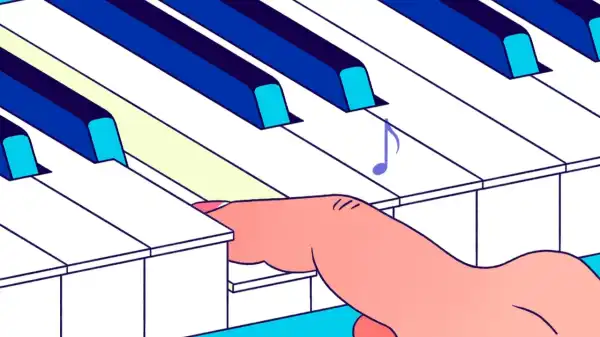
Save this storySave this storySave this storySave this story
A few years ago, my wife bought our then four-year-old son a wonderful set of wooden ramps that could be combined with our furniture to create courses for little marbles to roll down. The first course was simple to build, but as our ambitions grew, the difficulty increased. Could we get the marbles to turn at corners? What about generating enough momentum to propel them up a hill for a while? Would an ottoman hold up to a ramp? What about a piano bench? The variations seemed endless. Two or three times a month for the next two years, we’d refine our techniques or add new elements to the challenging courses. By the time my son grew bored earlier this year, we’d become ramp experts, able to see the untapped potential in any random object—an old stuffed animal, a dustpan, an oddly shaped cardboard box.
I didn’t expect to enjoy the ramps so much. But they became a portal to a unique experience that involved an exploratory cycle of trial, error, revision, and retry. It’s a special kind of intense repetition. In many aspects of our lives, we repeat actions to optimize or improve a task: I once drove a go-kart fifty laps around a track at a company event, gradually refining my racing line so that I could reduce my time; several mornings a week, my son makes a cheese omelet for his little sister, and each time he strives to make it more perfect. This repetition is like a persistent pursuit of perfection.
There is, however, another kind of repetitive activity—one that combines cycles of repetition with variation, opening up possibilities for exploration and discovery. It invites us to vary our approach in an open-ended way that deepens our inner resources over time. If you cook a stew every week, you don’t have to follow the same recipe; you can endlessly adjust the ingredients, developing your intuition as a cook and adding pages to your mental cookbook. When you rehearse a piece of music over and over, you can vary your performance, evoking new nuances of composition and emotion. When you paint a landscape and then redraw it, you can observe how changes in the light reveal new aesthetic possibilities and aspects of nature. In these cases, repetition does not lead to a single, Platonic endpoint. Instead, it facilitates the expansion of a multitude of possibilities that reflect your growing consciousness.
There are practical reasons for engaging in such activities. Some of these stews, visions, and landscapes may be transcendental, perhaps in ways you couldn’t imagine. It’s also helpful to recognize, one iteration at a time, that there are different paths to success. Having made many delicious vegetarian stews over the years, you become prepared to turn whatever’s in your kitchen—beans, tomatoes, that weird vegetable your wife picked up at the farmers market—into a delicious meal for your vegetarian friends. You’ll map out what engineers call a “design space”—the set of winning possibilities inherent in your endeavor. This is, broadly speaking, the evolutionary way of working. In evolution by natural selection, each new generation of creatures is nearly identical to the last, but with subtle changes that can prove valuable as the environment changes. Because the environment is constantly changing, no species can achieve perfection; instead, it’s change that ensures survival.
The same can be true in our individual lives. We seek out activities that challenge us to grow, to try and try again, because we want to evolve as individuals. Life is largely a matter of repetition—we wake up, eat, work, sleep, repeat—and each day can feel like an unsatisfying cycle. But repetition with variation expands us. It turns our cyclical days into spiral journeys. “A spiral is a spiritualized circle,” Vladimir Nabokov wrote in Speak, Memory. “In spiral form, the circle, unwound, has ceased to be vicious; it has been set free.” This way of being, for which we don’t even have a name, is part of what makes us feel like we are truly living our lives, rather than just going through the motions.
We’ve become so accustomed to trying everything ourselves that it seems strange to imagine that we’ll ever stop. And yet, it’s increasingly clear that artificial intelligence can free us from the burden of trying and trying again. AI systems make it easy to take an existing thing and ask for a new iteration. The technology is still evolving, and yet AI can already give you a personalized recipe based on a photo of what’s in your fridge. AI songwriters can generate version after version of a new tune; AI image makers can endlessly tweak an image. Is automated exploration a good substitute for an organic equivalent? Is this generation of variations the same as human creativity? These are important questions to ask, because as AI becomes more powerful, we’ll be increasingly tempted to give up early and let it figure it out for us.
People accept I
Sourse: newyorker.com